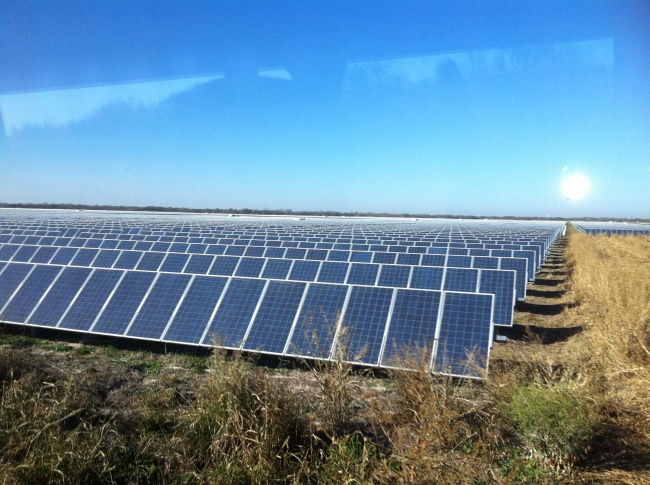
Over the last year we combed through massive amounts of data, from the Public Utility Commission of Texas, State Energy Conservation Office, Energy Information Administration, and good old-fashioned web searches to create the first ever Texas Clean Energy Scorecard.
“The Texas Clean Energy Scorecard is an easy-to-explore, interactive website that utility customers in Texas can use to inform themselves about their utility’s clean energy efforts. It shows who is putting their money where their mouth is on renewable energy, who is serious about reducing energy demand, and gives people the opportunity to spur these utilities to do more,” said Cyrus Reed, Conservation Director of the Sierra Club’s Lone Star Chapter.
Texas produces and consumes more electricity than any other state in the union and has enormous wind and solar energy resources, as well as the ability to expand energy efficiency programs throughout the state.
For the first edition of the Texas Clean Energy Scorecard, we divided our scoring into four main categories: the 10 largest municipally-owned utilities , the 18 largest electric cooperatives , the 40 top-selling Retail Electric Providers that buy and sell electricity in the competitive markets within ERCOT, and the nine state-regulated investor-owned utilities .
The results? Underwhelming.
We confirmed our suspicions. Based on our analysis, virtually all of the Texas utilities, retail electric providers, municipal utilities, and electric cooperatives earned low marks for their low levels of investment in energy efficiency, local solar, and renewable power production. In general, Texas utilities seem to be doing relatively little to support customers through strong energy efficiency programs or offering renewable energy choices at competitive prices.
In fact, only three municipal utilities (Austin Energy - 80; Denton Municipal Electric - 67; and CPS Energy - 65), one retail electric provider (MP2 Energy - 71) and one investor-owned utility (ONCOR - 63) earned grades above 60 points. Only two provided any incentives for electric vehicles. All utilities in Texas have opportunities for significant improvement.
There is, however, some good news on the horizon. A number of municipal utilities are in the process of making large investments in community solar, large-scale renewables, and increasing energy efficiency goals (although they have not yet made those investments). We expect their scores to look better a year from now. In addition, a number of new REPs emerged in 2018 and 2019 that offer unique programs and platforms. However, there wasn’t enough data to include them in the scorecard. In future scorecards, we hope to evaluate these newer REPs’ attempts to look at time-of-use rates based on wholesale rates, community solar, and low or no-carbon options for customers. Stay tuned for these “electrifying” updates.
“This scorecard shows a wide gulf between the promise of clean energy and real, on-the-ground developments in Texas,” said Shane Johnson, Clean Energy Distributed Organizer for the Sierra Club’s Lone Star Chapter. “To make this promise a reality we call on customers and constituents to pressure their private and public utilities to do more to move away from fossil fuels and towards a just transition to clean renewable energy and energy efficiency measures.”